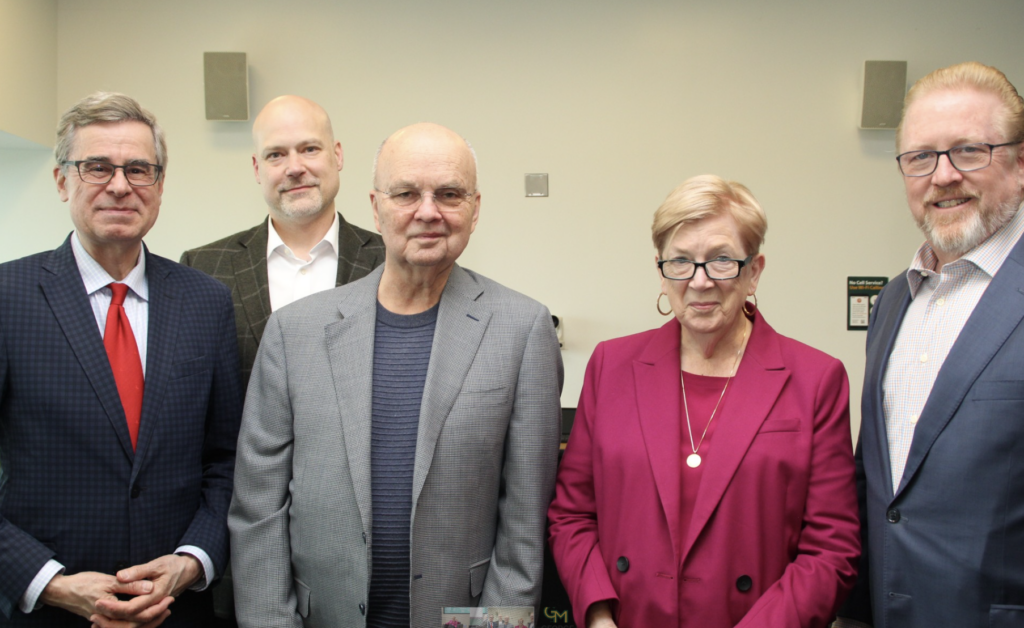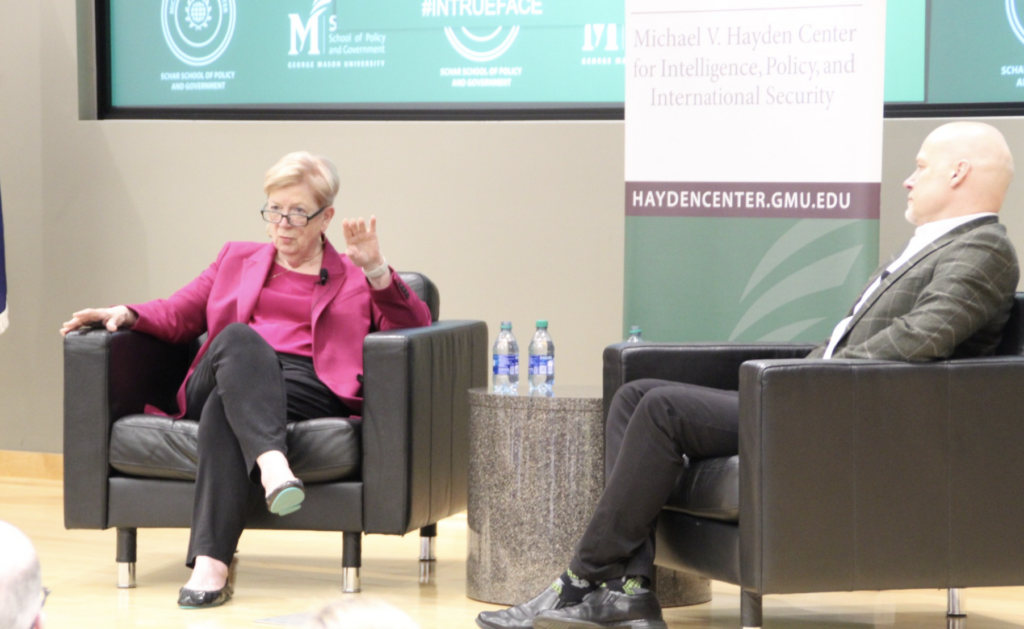ANUDARI OYUNBOLD
On April 25, 2024, the Michael V. Hayden Center for Intelligence, Policy, and International Security at George Mason University’s Schar School of Government hosted an event titled: In True Face, a Conversation with Jonna Mendez. The panel featured moderator David Priess, Director of Intelligence at Bedrock Learning, Inc., and a Senior Fellow at the Hayden Center. David Priess served during the Bill Clinton and George W Bush administrations as an intelligence officer, manager of analysts, and intelligence briefer at the Central Intelligence Agency. He frequently appears on broadcast networks and media. Joining him was speaker Jonna Mendez, who served 27 years undercover with the CIA and retired as a Chief of Disguise in the CIA’s Office of Technical Service. Jonna Mendez was also a specialist in covert photography. She is the best-selling coauthor of Argo, Spy Dust: A True Story of Espionage and Romance, and The Moscow Rules, and sole author of her new memoir In True Face. Jonna Mendez and her late husband, Tony Mendez, were founding board members of the International Spy Museum in Washington, DC.
The evening began with opening remarks by Schar School’s Dean Mark Rozell, and the Director of the Hayden Center, Larry Pfeiffer. Mr. Priess sparked conversation by inquiring about Ms. Mendez to share her personal experience from her work and to illustrate the main points of her story. Jonna Mendez shares her first-ever job at the Central Intelligence Agency as a contract wife. She married a CIA officer overseas and worked as a secretary and logistician. Mr. Priess acknowledged that Jonna Mendez navigated a very distinct culture in her career as a woman in the CIA, a system narrow and challenging to navigate, especially for a woman at that time. Ms. Mendez left the secretarial work and furthered her career at the institutional level, given opportunities by people who saw potential in her. She transitioned to a unique position as a CIA photographer, working overseas in dark rooms to develop films for case officers. Her main goal was to get out on the streets and train others in this profession. From a photographer’s point of view, there were many benefits to developing film that would provide her access to individuals conducting operational casework. Ms. Mendez had to learn all of the tasks that those men had to do in one year. Going through the training courses, set her apart from other individuals and elevated her work opportunities.
Mr. Priess then mentioned Tony Mendez, her late husband, who gave many women, including herself, opportunities in the work field. Ms. Mendez was offered work in disguise and traveled around the world. She considered the job as “the best assignment ever.” The operational purpose of disguise was more than just putting on a wig and a glued-on mustache. When she started working in disguise, most of the individuals she worked with were men. There were very few female operations officers. Operations were part of the CIA that Ms. Mendez was interested in the most. Most of the men did not want anything to do with disguise. The disguise was considered an unnecessary and complex part of the operation work. As terrorism and counter-narcotics advanced, the use of disguise became necessary for self-protection. When Ms. Mendez became Chief of Disguise, she and her team traveled to Moscow. A challenge that arose when Ms. Mendez and her team were in Moscow, was surveillance. It became difficult for operation officers to get work done with surveillance cameras.
The conversations continued as Mr. Priess and Ms. Mendez discussed some key developments in her work. One important idea consisted of a Jack in the Box pop-up dummy to replace a passenger in rolling car meetings. Another technology development was SAM, the semi-animated mask, which allowed officers in masks to talk in their voices and could fool anyone. Ms. Mendez stated, “Once we could put somebody’s face on your face, we could make your twin.” Lastly, Ms. Mendez observed that, throughout her career, she learned that the work consisted of more than just inventing new methods it was also about helping people and collaboration.
As the event concluded, Ms. Mendez took questions from the audience. In response to a question about what traits would surprise people that would make a good case officer, Ms. Mendez noted the importance of character and interpersonal skills. She mentions that the CIA is looking for people who know multiple languages, are curious about the world, and are paying attention and interested in current global events. However, the hardest pill for any new officer to swallow is not being able to tell people about the accomplishments that they have achieved throughout their career field.
Anudari Oyunbold is a recent undergraduate student from George Mason University with a BS in Criminology, Law, and Society.
The YouTube recording can be found here: https://www.youtube.com/watch?v=BGMLNxY9bFE


